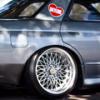Removing Head From Rb26 - Scar Non?
Announcements
-
Similar Content
-
Latest Posts
-
Yes it is. We get stock from Nismo directly. I'm happy to take photos/video of it as proof before I ship it with timestamps or whathaveyou.
-
By Stringycheese · Posted
Learned a bit @PranK To add a twist to this take, I've done some further investigation and turns out I don't know if I even have coilovers. I have Mugen Showa on all corners, which appear to be struts / springs online. Someone may be able to correct me if I'm wrong. -
Well, i've been told it's going to be in Poland around october - november. It should set off by the end of this month. Waiting for it to arrive is the easy part, searching for the right car, wake up in the middle of the night to see the photos and decide whether to bid or not - that was difficult









Recommended Posts
Create an account or sign in to comment
You need to be a member in order to leave a comment
Create an account
Sign up for a new account in our community. It's easy!
Register a new accountSign in
Already have an account? Sign in here.
Sign In Now